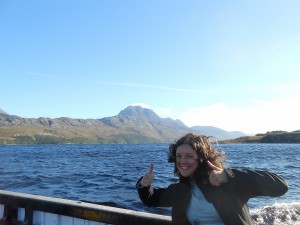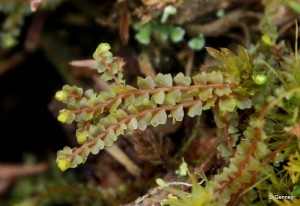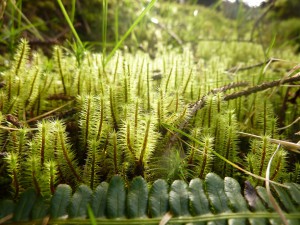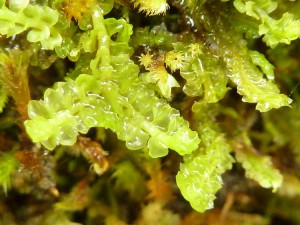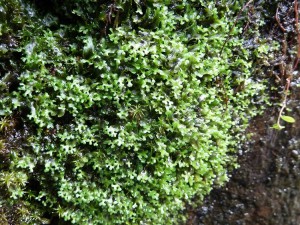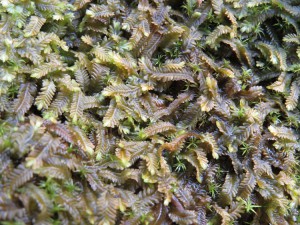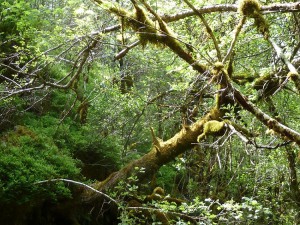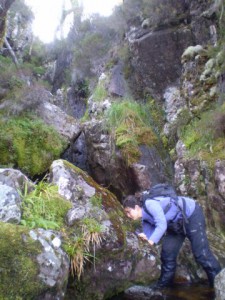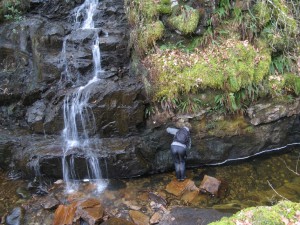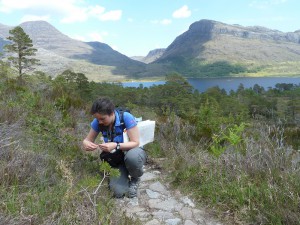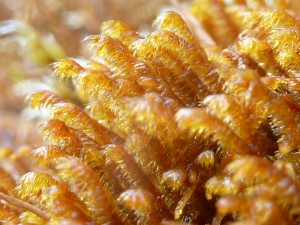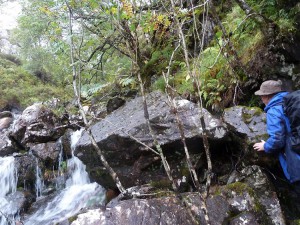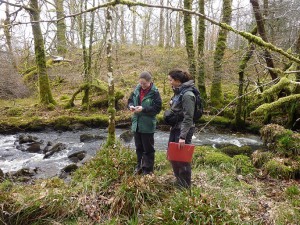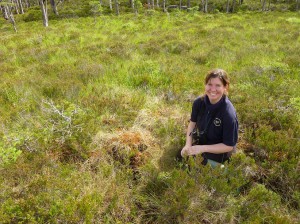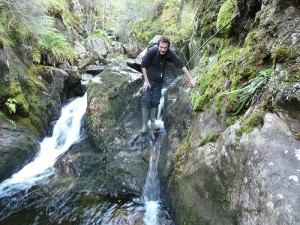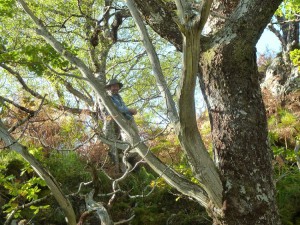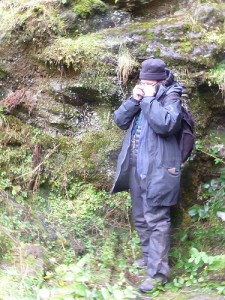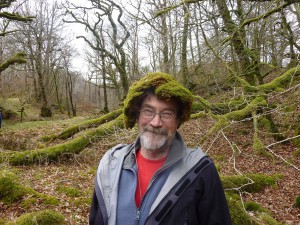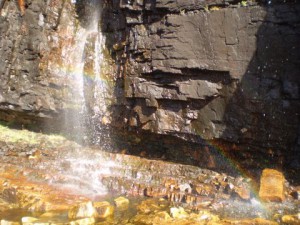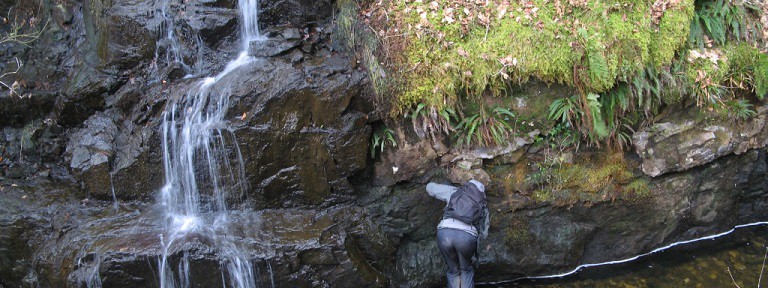
Time has gone so fast since I started as Bryophyte Apprentice last year. The apprenticeship has now come to an end, but I have learned so much and I’m happy to say for me and Bryophytes it is only the beginning!
Numerous people invested a great deal of time and patience in my training and to them I am hugely indebted and forever grateful. I will return the favour by continuing to survey bryophytes!…and that is something I don’t much mind. Granted some specimens may in some dried situations appear dull and boring at first…..but just add water and for added excitement a hand lens too and all will be revealed. A truly stunning and exciting group of plants of intricate beauty!
Not only pleasing under the lens, but also from a distance bryophytes transform our habitats and landscapes. Without them so many of our habitats would miss an elemental essence.
Bryophytes are also ecologically intrinsic and fundamental in some habitats, and in Scotland that includes our Atlantic woodlands, heaths, ravines and bog habitats which may be of national and international importance. There are so many areas of interest for example snow bed communities, springs and flushes, sand dunes and limestone outcrops, not to mention rare and interesting species that may be found in urban areas. This diversity of habitats as well as the diverse geology and climate all contribute to the fact that Scotland is in fact home to approximately 60% of all European bryophytes!
Atlantic Woodland
Forestry Commission are currently taking advantage of the potential to restore native woodland on sites known as Plantation Ancient Woodland Sites (PAWS). I had the opportunity to survey several sites proposed for restoration, advise on the bryophytes present and make comment towards subsequent management recommendations. These sites contain remnant features of ancient woodland and these can be a bryologists playground! Although there are a lot of challenges to get the restoration right (e.g. deer grazing levels), it is really inspiring to see the potential there is for the future of these woodlands.
Bryophytes in Ravines
The main focus of my project was surveying ravines in the western Highlands. This was supported by Scottish Natural Heritage. Within Europe and on a global scale, Scotland is a stronghold for oceanic bryophytes and in particular Scotland’s oceanic ravines are recognised and valued for the bryophyte communities which occur here.
Incised steep-sided watercourses are unique habitats which may contain unique and diverse bryophyte communities. These same watercourses in the wet and mountainous terrain of Scotland are also ideal for the development of small scale hydro-electric schemes which is prevalent in Scotland at the moment. In order to support development of this renewable energy source while safeguarding habitats of international importance, SNH have produced useful guidelines for surveyors, developers and planners.
The guidelines assist the planning process by highlighting which watercourses require a bryophyte survey and which do not, and subsequently which are or are not of international importance. Watercourses are categorised based on the presence of oceanic ravine indicator species, each of which are allocated a score. At the moment these ravines are surveyed on a case by case basis for hydro-scheme development applications. Funding for further surveys of Scotland’s ravines would provide useful information on the distribution and ecology of oceanic ravine indicator species to inform strategic decision making on a landscape scale.
I surveyed 12 ravines in and around Beinn Eighe, recording all bryophytes which were found to occur, paying particular attention to recording the specific location of oceanic ravine indicator species. As a result six of those ravines are now categorised as internationally important and the remaining 6 are considered to be of low to medium bryological importance.
During this survey work I was based at the SNH Anancaun Field Station, by Beinn Eighe NNR. Beinn Eighe is a truly unique place for bryophyte species and communities. For example, there is a stunningly beautiful endemic species of liverwort here known as Herbertus borealis (or if you prefer…Northern Prongwort). It forms locally extensive carpets of bright golden-orange, typically along with Juniper.
Although I am sad that this incredible experience has come to a close I can really look forward to new exciting opportunities with the British Bryological Society and I now have confidence to survey my local area. There are also several BBS courses and field meetings planned which will be a great way to meet up with bryophyte buddies, continue learning and survey some incredible areas.
I start a new job very soon as a consultant ecologist close to home in Glasgow. It feels good to know I will be able to continue to survey bryophytes in my job, but even more so it feels great that bryophytes are being valued and are receiving recognition within planning applications and habitat management plans. It’s thanks to the hard work and expertise of many of the bryologists in Britain, including the SNH lower plants officer. I have a lot of admiration and respect for these people and I will endeavour to make their investment in me worthwhile!

